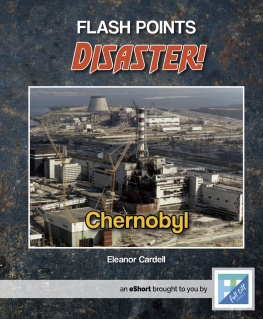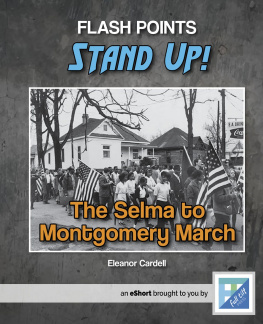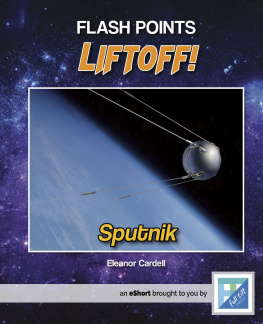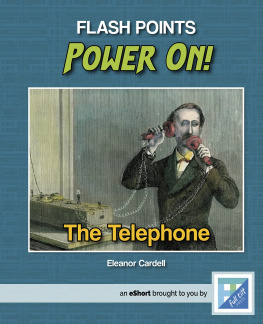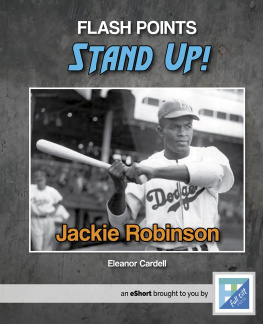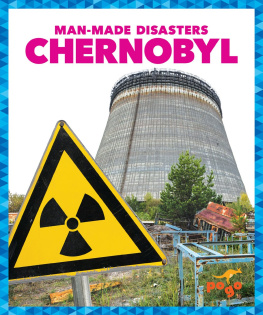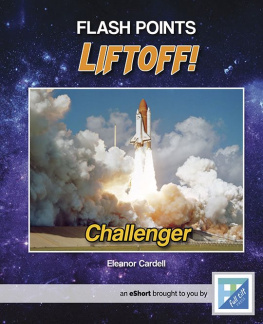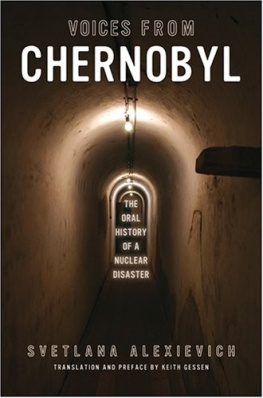
2 Flash Points
April 26, 1986
Its early morning. Everything is quiet at
the Chernobyl Nuclear Power Plant in the
former Soviet Union (USSR). e workers
are running some tests on the reactors . ey
are going to shut one down for maintenance.
is is normal. ey have done it before.
Suddenly, the ground is rocked by a powerful
explosion. A couple of seconds later, theres another
explosion. is one is even bigger. A nuclear reactor
at the plant has just exploded. e power plant is releasing
poisonous radiation into the air. Multiple buildings are on re.
Local re ghters respond quickly. Most res are put out easily in the rst
hours. But it is another days before the accident is fully contained.
Chernobyl
reactor: the part of a nuclear power
plant where nuclear reactions happen
radiation: a by-product of nuclear
reactions; it is too small to be seen,
but is very dangerous

Disaster!
Chernobyl began operating in 1977.
Then, it only had one reactor. The next
three were built between 1977 and 1983.
Did you know?
An articial lake was built near the
Chernobyl Nuclear Power Plant. The plant
used the water to cool the reactors.

Unscheduled Tests
e workers were preparing
to shut down one of the
reactors. ey needed to do
some normal maintenance,
and had already planned to
shut down Reactor ey
decided to do some tests, as
well. ese tests would tell
them what would happen
if the plant lost power.
4 Flash Points
How and Why
Accidents and disasters oen have more than one cause.
Many dierent things come together to cause events that can
greatly impact the future. Take a moment to explore some
of the things that led to the nuclear disaster at Chernobyl.

Lack of Communication
e test team didnt tell anyone what they were
doing. e safety team thought they were going to
shut down the reactor. Instead, the workers started
their tests. Because of this, no one followed the
correct safety rules. No one realized that the reactor
core was having problems until it was too late.
Unsafe Design
e power plant was not designed in a safe way.
ere was a power surge. e nuclear fuel became
very hot. ere was water in the core. e water was
supposed to cool the fuel down. But the water turned
into steam instead. Pressure built up inside the
reactor. e explosion blew the top o the reactor.
Hydrogen Buildup
Scientists dont know for sure why
there was a second explosion.
Many guess that hydrogen gas
built up in the reactor. e
hydrogen was lit on re. is
caused another, larger explosion.
Disaster!

What Happened Next?
Aer the explosion, the reactor started to release radiation
into the air. ere was also a lot of radioactive debris .
Some of the debris was heavy and fell close to the
reactor. But some was very light. e wind could
carry it a long way. is light debris spread across
the USSR. It even went into Europe.
e USSR acted quickly. ey wanted to stop as
much damage as possible. ey dumped radiation
absorbents into the reactor. ese helped to lower the
radiation. Reactor was also covered in a large concrete dome.
is helped stop the radiation from leaking out.
More than 100,000 people who lived close to the power plant were
forced to leave. But the radiation had spread even farther than that.
More than four million people lived in the area aected by radiation.
By the end of the summer, almost people had died. e radiation
had poisoned them. Six of these people were remen. ey had
helped to put out the res at the reactor.
e radiation also aected the wildlife. All of the trees in four square
miles (10 square kilometers) around Chernobyl died. e dead pine
trees all turned a red-brown color. Because of this, the area is called
the Red Forest.
6 Flash Points
debris: scattered pieces of waste
absorbent: a material that is
used to soak up something else

Disaster!
When the towns near Chernobyl were
evacuated, many people had to leave
behind almost everything they owned.
Did you know?
At the time of the Chernobyl
power plant explosion, two more
reactors were being built nearby.
These were never completed.

Ripple Effects
A single event, no matter how big or small it may seem
at the time, can have a big impact on the future. e
disaster at Chernobyl had many far-reaching eects.
Radiation
Radiation can make
people sick in many
ways. One of these is
cancer. After the disaster at
Chernobyl, a lot of people
were afraid. They thought
more people would get
cancer. That didnt happen.
However, many people
still feared that the
radiation there would
cause cancer.
Nuclear Fear
Lots of countries had nuclear
reactors. After Chernobyl,
governments made safety rules
stronger. But the people still feared
nuclear power. They wanted the plants
shut down. Since then, Europe
has closed about percent of
its nuclear power plants.
8 Flash Points

Preserve
The Exclusion
Zone is like a
wildlife preserve.
Because people arent
allowed inside, there
are lots of animals. Some
endangered animals live
there, too. Scientists think
that while some do get
sick, the animals are still
doing well because

